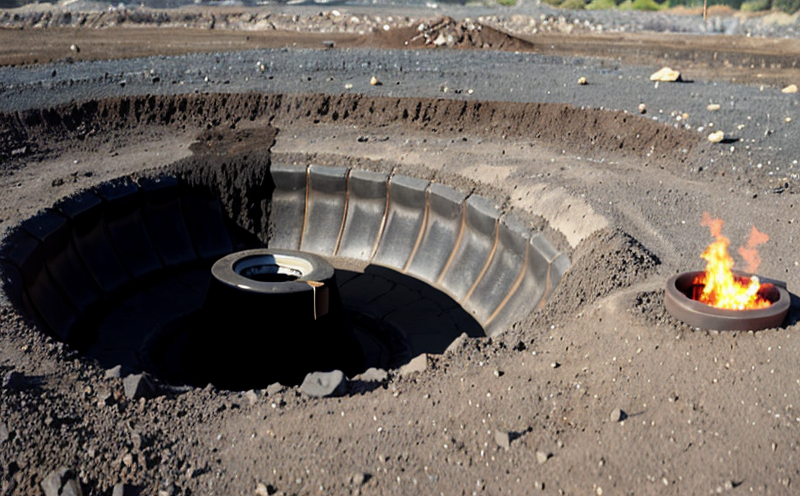DIN 22022 Coal Proximate Analysis Testing
The DIN 22022 standard provides a comprehensive method for the proximate analysis of coal, which is essential in the mining testing sector. This test measures key parameters such as moisture content, ash content, volatile matter, and fixed carbon content to evaluate the quality and calorific value of coal samples.
The process involves several steps that are critical for accurate results:
- Sample Preparation: The coal sample must be homogenized using a riffle splitter or similar device. This ensures an even distribution of material, which is crucial for obtaining representative data.
- Drying: Samples should be dried at 105°C ±2°C in a drying oven until constant weight is achieved. This step removes moisture and prepares the sample for further analysis.
- Ash Determination: Ash content is determined by incinerating the sample under controlled conditions, typically at 815°C, to ensure all volatile components are burned off while leaving only inorganic matter behind.
- Volatile Matter Measurement: This involves heating the coal sample in a closed crucible or bomb calorimeter under specific conditions. The loss of mass during this process reflects the volatile content of the coal.
- Fixed Carbon Calculation: Fixed carbon is calculated by subtracting the sum of moisture, ash, and volatile matter from 100%.
The accuracy and precision of these tests are paramount in ensuring reliable data. Proper handling and interpretation of results are vital for making informed decisions regarding coal quality, which directly impacts its economic value and environmental footprint.
| Parameter | Description | Units |
|---|---|---|
| Moisture Content | The percentage of water present in the coal sample before drying. | % |
| Ash Content | The percentage of inorganic matter remaining after incineration at 815°C. | % |
| Volatile Matter | The weight loss during heating under specific conditions. | % |
| Fixed Carbon | The percentage of carbon remaining after moisture and volatile matter are subtracted from total sample mass. | % |
These parameters are crucial for various stakeholders, including quality managers, compliance officers, R&D engineers, and procurement specialists. Understanding these metrics enables better decision-making processes related to coal sourcing, processing efficiency, and environmental impact assessments.
Why It Matters
The importance of DIN 22022 Coal Proximate Analysis Testing cannot be overstated. Accurate proximate analysis helps mining companies and energy producers optimize their operations, reduce costs, and minimize environmental impacts.
- Economic Benefits: By ensuring coal quality meets industry standards, companies can enhance profitability through efficient resource utilization.
- Environmental Considerations: Understanding the composition of coal allows for better management practices that reduce emissions and improve sustainability efforts.
- Regulatory Compliance: Adherence to international standards like DIN 22022 ensures compliance with local regulations, reducing legal risks.
In summary, this testing method is integral to maintaining high-quality coal production, which supports broader goals of efficiency and sustainability within the mining industry.
Applied Standards
| Standard | Description |
|---|---|
| DIN 22022-1 | Sampling and Sample Preparation for Coal, Coke, and Related Products |
| DIN 22022-2 | Determination of Moisture in Coal, Coke, and Related Products |
| DIN 22022-3 | Determination of Ash in Coal, Coke, and Related Products |
| DIN 22022-4 | Determination of Volatile Matter in Coal, Coke, and Related Products |
The use of these standards ensures consistent and accurate testing methods across the industry. Compliance with DIN 22022 is crucial for maintaining quality control and ensuring that coal meets the required specifications.
Competitive Advantage and Market Impact
- Informed Decision-Making: By leveraging DIN 22022 Coal Proximate Analysis Testing, companies can make more informed decisions about coal procurement and utilization.
- Enhanced Reputation: Adherence to international standards enhances the reputation of mining operations, appealing to environmentally conscious consumers and stakeholders.
- Better Resource Utilization: Accurate proximate analysis helps in identifying underutilized resources, leading to more efficient use of coal.
The ability to consistently produce high-quality coal is a significant competitive advantage. It allows companies to differentiate themselves in the market and secure long-term contracts with reliable suppliers.





